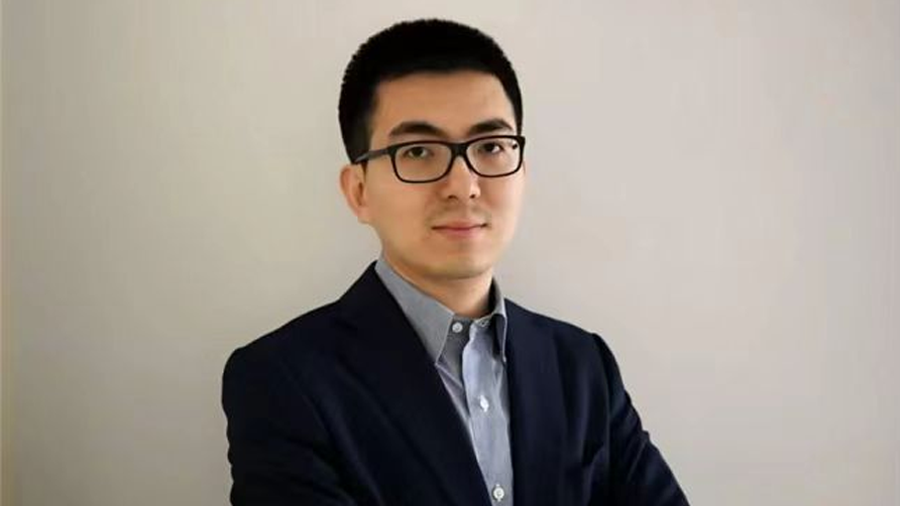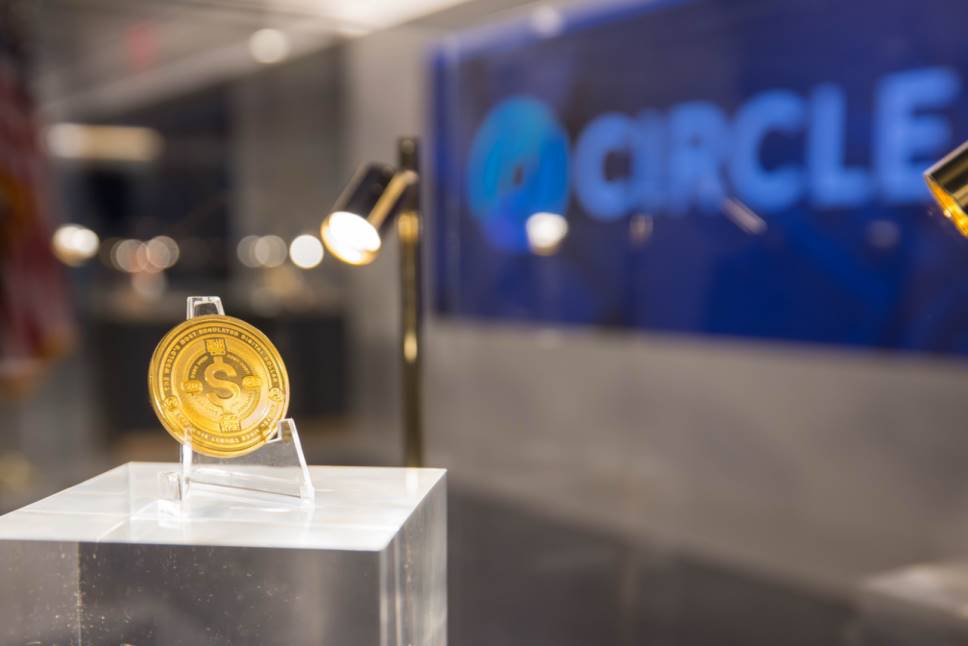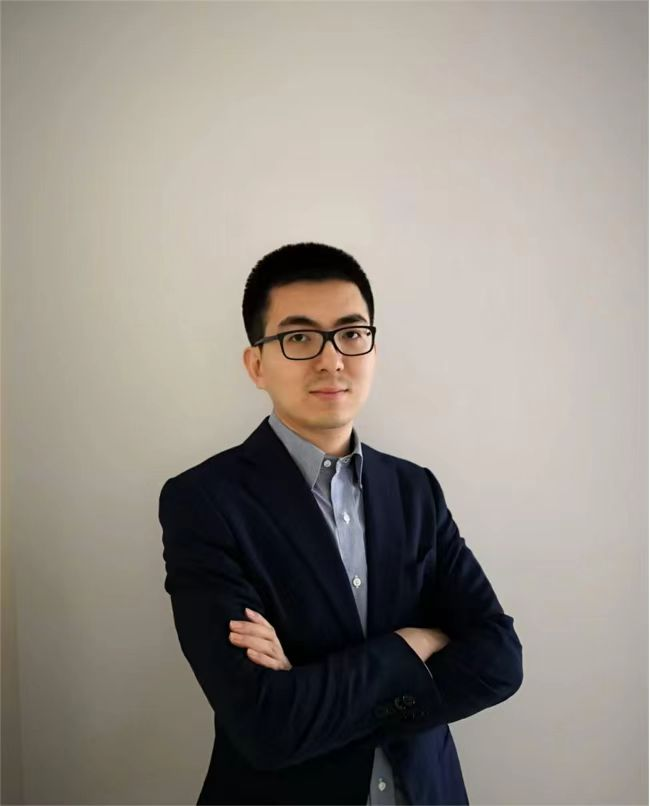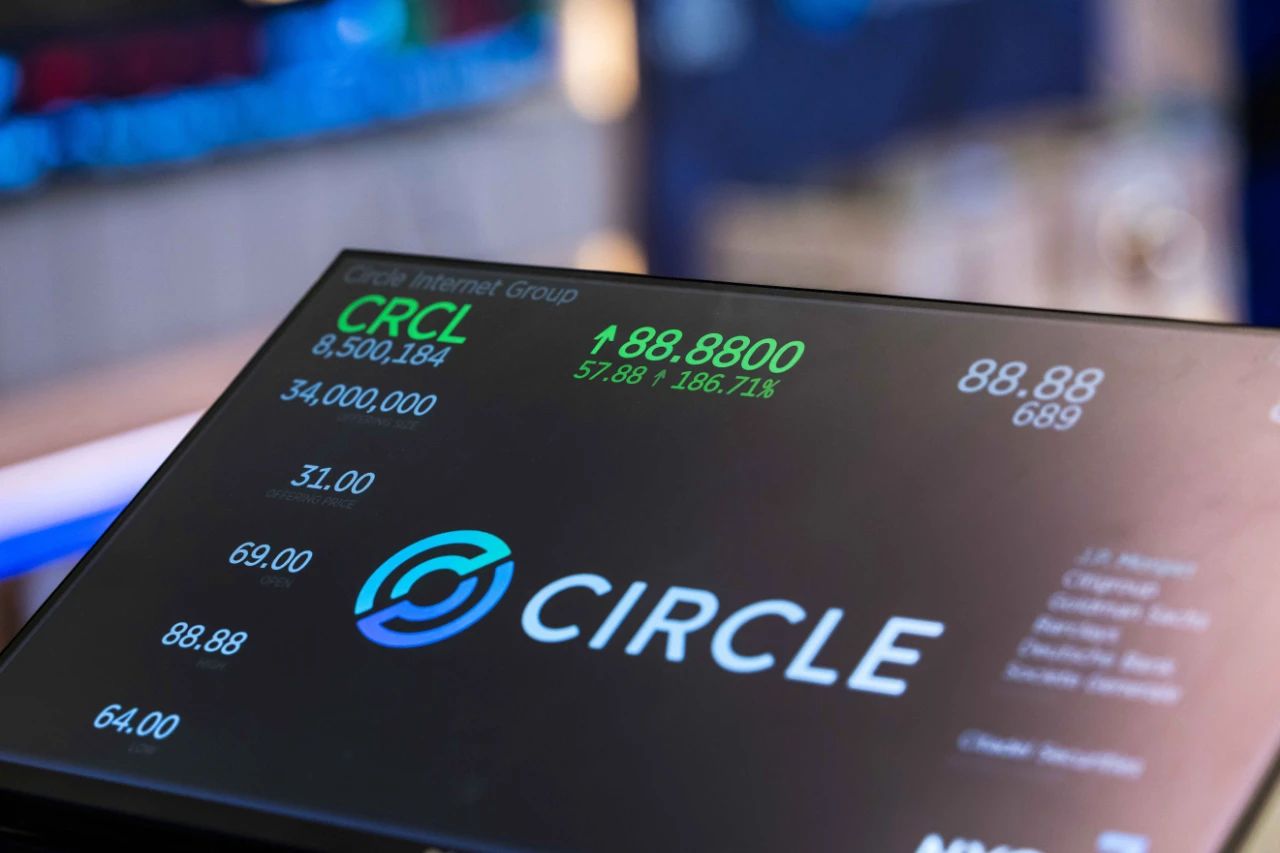In mid-2023, Lei Ming, as a founding partner, established Zhui Chuang Venture Capital, beginning the formation of the Zhui Mi Ecological Fund.
Author: Stone Jin

On the evening of June 5, 2025, Beijing time, Circle Internet Group (hereinafter referred to as "Circle") officially listed on the New York Stock Exchange under the stock code "CRCL," becoming the "first global stablecoin stock."
Two trading days later, Circle's stock price had risen 247.42% from the issue price, with a market capitalization of approximately $24 billion. In fact, during this IPO issuance, Circle had repeatedly raised the number of shares and the issue price, ultimately raising $1.1 billion and achieving over 25 times oversubscription.

Behind this most talked-about large IPO of 2025 so far are several investors with Chinese backgrounds. Among them, Lei Ming, then an investor at Huaxing New Economy Fund, invested in Circle in 2018. With Circle's listing, these early investors also reaped high investment returns.
Lei Ming stated that his two core investment judgments regarding Circle at the time were: first, blockchain technology could create significant commercial and social value in the future; second, investment is about investing in essence, and the essence of finance is licensing capability, and Circle happened to be the one with the most comprehensive licenses at that time.
Additionally, Lei Ming pointed out that blockchain was a significant era beta from 2017 to 2018. To achieve good fund performance, one must seize the largest era beta during the investment period. Besides Circle, Lei Ming also captured era opportunities in the new energy vehicle sector with NIO, as well as in popular brands among the post-95 generation like Dewu and Pop Mart, thus maintaining a very high investment success rate.
Of course, the largest beta in the current era is undoubtedly AI, robotics, and globalization, which has almost become a consensus.
In mid-2023, Lei Ming, as a founding partner, established Zhui Chuang Venture Capital, beginning the formation of the Zhui Mi Ecological Fund.
Currently, Zhui Chuang Venture Capital has invested in several companies, including the embodied intelligence company "Magic Atom," the pool robot company "Surge Future," the embodied large model company "Qian Jue Technology," the consumer-grade 3D printer company "Atom Reshape," and the smart short-distance travel company "Tan Tu Technology."

Magic Atom's general humanoid robot and quadruped robot products
Lei Ming emphasized that the core competitiveness of the Zhui Mi Ecological Fund comes from the empowerment of the Zhui Mi incubation ecosystem: on one hand, Zhui Chuang can invest in projects incubated by the Zhui Mi ecosystem at optimal valuations, ensuring the stability and high growth potential of the projects; on the other hand, relying on the industry insights of the Zhui Mi ecosystem, the fund can also expand investments in high-quality external projects to achieve ecological synergy.
According to Lei Ming, he and his team are currently also raising a dollar fund and continuously emphasizing the concept of "China to Global" to dollar LPs, which means leveraging China's comprehensive capabilities in various fields and believing that Chinese people have the strength to "achieve results" globally.
It is worth adding that in August 2024, Zhui Chuang Venture Capital announced the establishment of this industrial venture capital fund and completed the first closing of a RMB fund. It is reported that within six months, the fund achieved oversubscription, with a MOIC of 2.5 times, and 100% of the projects in the fund achieved at least a doubling in valuation.
Lei Ming stated, "One of our important directions moving forward is to invest in globalization—standing from the perspective of a Chinese team, we will recruit some overseas teams in countries like the United States and the United Kingdom, gradually improving our capabilities in this area, truly achieving 'China to Global.'"
As Circle officially landed on the New York Stock Exchange, Lei Ming shared with "IPO Early Know" his core logic for investing in Circle seven years ago, as well as some thoughts and outlooks after founding Zhui Chuang Venture Capital.

The following is a selection of dialogues between Lei Ming and "IPO Early Know":
Investing is about investing in "essence"
Q: You invested in Circle seven years ago; what was your judgment logic at that time?
Lei Ming: I had just joined Huaxing not long before in 2018, and blockchain was one of the sectors I covered. I personally recognized the underlying logic of blockchain and believed that blockchain technology could create significant commercial and social value in the future. But frankly, at that time, blockchain was still in its early development, and many laws and regulations were unclear, so we tried to choose projects that we believed were compliant and allowed by risk control, as we still had to consider the exit through listing later.

Q: Circle's market capitalization of over $20 billion today must be somewhat unexpected.
Lei Ming: To be honest, there is a certain element of luck—at that time, Circle's main business was not stablecoins; they had just started this business. Additionally, Circle's IPO coincided with the U.S. and Hong Kong successively introducing legislation regarding stablecoins, which directly led to the success of Circle's issuance. Of course, its future potential is also very large; none of this existed seven years ago.
But we had a basic judgment at that time, which was our consensus—finance is essentially a licensing business. When a new thing comes out, the regulation may not have caught up yet, and in the era of wild growth, anyone could achieve some results; but in the long run, the financial industry must become increasingly compliant and must operate under regulatory conditions for the long term, so licensing capability becomes particularly critical, and this was something we were very certain about—Circle was the one with the most comprehensive licenses.
Q: The Circle project is relatively niche, at least for traditional investment institutions. From this project, have you summarized any reusable experiences for future investment processes?
Lei Ming: I roughly summarize it into four points:
First, when we invest, we should embrace the opportunities brought by new technologies as much as possible. I should be considered one of the first to "eat crabs" in investing in blockchain within traditional financial institutions. So when these transformative technologies emerge, we need to maintain long-term attention, continuously learn new things, and research new directions.
Second, even when seeing new things in a certain industry, we still need to return to the underlying logic; the core of investment ultimately is to invest in essence. As I just mentioned, the success of the Circle case benefited from our insight into and grasp of the essence of the financial industry, which is "licensing."
Third, a global perspective. Seven years ago, there weren't as many peers mentioning "globalization," but when I talked with Circle's founder at that time, I felt he had a global mindset. For a company to truly succeed, it must embrace globalization, which includes various aspects such as the globalization of capital, markets, supply chains, and talent. I believe the firm belief in globalization was also a significant factor in the success of this case.
Finally, invest in founders who have faith and conviction. When a new thing emerges, there will definitely be many changes, and the market will become quite restless; at this time, we need to invest in founders who are very certain and have strong faith in what they are doing within this sector. If a founder lacks faith and frequently changes, it is highly likely that they will not be able to build an excellent company.
Seizing major era opportunities as much as possible
Q: You previously mentioned that "the performance of the fund essentially depends on whether it can capture the largest era beta during the investment period." You invested in NIO at that time, which can be considered one of the biggest era opportunities, but can Circle also be considered so? How do you find projects outside of these major era opportunities?
Lei Ming: I don't think so; I believe blockchain can also be considered a very large beta from 2017 to 2018.
Blockchain is a very large sector, and even today, many applications have not yet emerged. In fact, blockchain technology has the potential to be applied in many fields.
Q: When you invested in Dewu in 2020, did you also see it as an era beta?
Lei Ming: The biggest beta of Dewu lies in: at that time, we conducted a survey on the post-95 generation and judged that the era opportunity was an investment opportunity targeting the post-95 demographic.
At that time, my logic was, if we want to seize the opportunity of a major era change, simply put, it boils down to "people, goods, and venues," among which the "people" variable is definitely the largest. So we conducted an in-depth study on the "Z generation," and I led the team to eight cities, covering first to fifth-tier cities. After studying this generation, we filtered out a series of investment themes based on the post-95 generation. Therefore, we invested in Dewu when its valuation was relatively low, and today, Dewu's scale and influence are already very large.
When we invested in Dewu, the wave of mobile internet had already begun to fade, and after 2018, there were very few companies like Dewu emerging.
Overall, I believe we should try to find those relatively large era beta opportunities as much as possible; they may not necessarily be the largest, but there can still be some significant investment themes, such as blockchain and the post-95 generation.
Q: The current era opportunities are AI, robotics, and globalization.
Lei Ming: In fact, this is also the core of what we are doing at Zhui Chuang today; the next biggest era opportunity revolves around AI, robotics, and globalization.
In other words, truly valuable projects that can make investors money are those that can significantly improve social productivity and production efficiency through technological innovation. For example, AI and robotics are driving the improvement of human productivity, so this is the biggest era opportunity.
Positioning the Zhui Mi Ecological Fund
Pursuing "China to Global"
Q: Today, almost all institutions emphasize their investments in AI, robotics, and globalization. As a newly established institution for just over two years, how do you ensure that you can establish a foothold in the market and even maintain a leading position?
Lei Ming: Our positioning is the Zhui Mi Ecological Fund, so a significant advantage lies in Zhui Mi's deep industrial accumulation and complete innovation incubation system.** Over the past few years, Zhui Mi has successfully built mature categories and accumulated systematic capabilities and entrepreneurial methodologies. We can leverage this system and methodology to seek opportunities globally across industries and regions, especially those related to robotics, and then carry out corresponding incubation.
What I want to emphasize here is that I have fully felt that the organizational management model and methodology established by Zhui Mi is ahead of its time. The external perception may not be as strong, and it may take some time to gradually appreciate it. We will open up these systematic capabilities to our incubated enterprises.
In fact, we have recently incubated many projects—on one hand, we can invest in projects incubated by the Zhui Mi ecosystem at the lowest valuations right away; on the other hand, these projects currently have a much higher success rate compared to external projects. Several projects have growth curves modeled on achieving revenues of 300 to 500 million in the first year and 1 billion in the second year, and all projects strive to achieve global first-class product performance from the start, achieving profitability in the first year without burning cash, which is what we emphasize internally as "global high-endization."
Therefore, the stability of these projects is very high, and they can leverage the global channels already established by Zhui Mi to achieve very rapid growth, making their growth potential quite considerable.

A wireless pool robot product developed by Surge Future
With the perspective of the entire Zhui Mi ecosystem, we can also extend our investments to projects outside of those incubated by Zhui Mi. For example, we can invest in some upstream projects, and at this point, we can consult Zhui Mi's business team. For instance, asking "Will they use these upstream technology platforms?" is a relatively accurate and intuitive judgment dimension.
Additionally, we can leverage Zhui Mi's global perspective to invest in global projects. We have already reserved some projects in Silicon Valley, in the UK, and so on. On one hand, our fund has teams overseas that can actively seek out projects; on the other hand, we can also have Zhui Mi's sales team recommend projects they come across.
We are currently also raising a dollar fund, but fundraising in dollars today is somewhat different from the past—previously, the fundraising logic was that dollar investors were very optimistic about the Chinese economy, essentially going all-in on China, directly handing money to top Chinese GPs to invest.
However, the external environment today may have some changes, so we have been emphasizing the concept of "China to Global" to dollar LPs, which means leveraging various capabilities of China, including supply chain capabilities, engineering R&D capabilities, operational capabilities, etc., to achieve a global layout.
Fund returns and ecological synergy can be achieved together
Q: As an ecological fund, how do you view the priority between financial returns and ecological synergy?
Lei Ming: From the perspective of the fund, we definitely prioritize financial returns first.
Ecological synergy is actually a natural outcome. For example, during the fundraising process for the Zhui Chuang RMB fund, we have a cooperative relationship with our business team—because the most suitable places for each project to land may vary, the business team will comprehensively consider factors such as supply chain support, labor costs, and transportation convenience, selecting a few of the most suitable locations, and then we will discuss the establishment of the fund in those suitable locations.
If we were to first raise the fund and then force the business team to cooperate in landing and reinvesting in similar projects, this model would not be sustainable. Essentially, both parties are in a win-win cooperative relationship, and we will also help enterprises secure some favorable investment promotion policies.
In general, we decide which incubated projects to invest in, at what stage to invest, and at what valuation to invest. The core starting point here is to maximize the fund's returns and ensure that LPs make money while minimizing risks. At the same time, the business team can also achieve some good results, so this is all a natural outcome.
Fund returns and ecological synergy are not contradictory; they can be achieved together.
Q: You have achieved good investment return multiples in the past two years. In your opinion, what aspects has Zhui Chuang done well? What areas can be iterated and improved upon next?
Lei Ming: The relatively good results we have achieved in the past two years are largely due to Zhui Mi's incubation model, entrepreneurial methodology, and reusable organizational management incentive system.** The success rate of these incubation projects is inherently high, which is evident.
On this basis, we have also invested in some good enterprises along the upstream of the industry, whether in components or underlying algorithms.
Moving forward, an important direction for our self-iteration is to invest in globalization—standing from the perspective of a Chinese team, we will recruit some overseas teams in countries like the United States and the United Kingdom, gradually improving our capabilities in this area, truly achieving "China to Global."
免责声明:本文章仅代表作者个人观点,不代表本平台的立场和观点。本文章仅供信息分享,不构成对任何人的任何投资建议。用户与作者之间的任何争议,与本平台无关。如网页中刊载的文章或图片涉及侵权,请提供相关的权利证明和身份证明发送邮件到support@aicoin.com,本平台相关工作人员将会进行核查。




